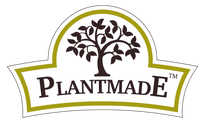The growth of plant-based milk alternatives or Vegan milk alternatives has been an increasingly popular choice for consumers in recent years. According to data from the Plant Based Foods Association and SPINS, sales of plant-based milk in the US grew by 20% in 2019, reaching a total of $2 billion. This growth has been driven by factors such as increased awareness of the environmental impact of animal agriculture, health concerns, and changing consumer preferences. Plant-based milk alternatives are becoming more widely available and have expanded beyond traditional options like soy and almond milk, to include varieties made from oats, hemp, and pea protein. In addition to plant-based milk, other plant-based dairy alternatives such as cheese and yogurt have also been growing in popularity.
One of the main drivers of the growth of plant-based milk [vegan milk] has been the perceived health benefits of plant-based diets. Plant-based milk is often seen as a healthier alternative to cow’s milk due to its lower levels of saturated fat and cholesterol. Additionally, plant-based milk can be fortified with vitamins and minerals, making it a good source of nutrients for those following a plant-based diet. However, it is important to note that not all plant-based milk alternatives are created equal, and some may be highly processed and contain added sugars or other additives. It is important for consumers to read labels and choose products that are minimally processed and contain no added sugars.
The plant-based milk industry is also having a significant impact on the environment. According to a study by the University of Oxford, producing a glass of dairy milk requires three times more greenhouse gas emissions than producing the same amount of soy milk, and ten times more than producing oat milk. Additionally, the production of dairy milk requires significantly more land and water resources than plant-based milk alternatives. As consumers become more aware of the environmental impact of their food choices, plant-based milk alternatives are likely to continue to grow in popularity.




